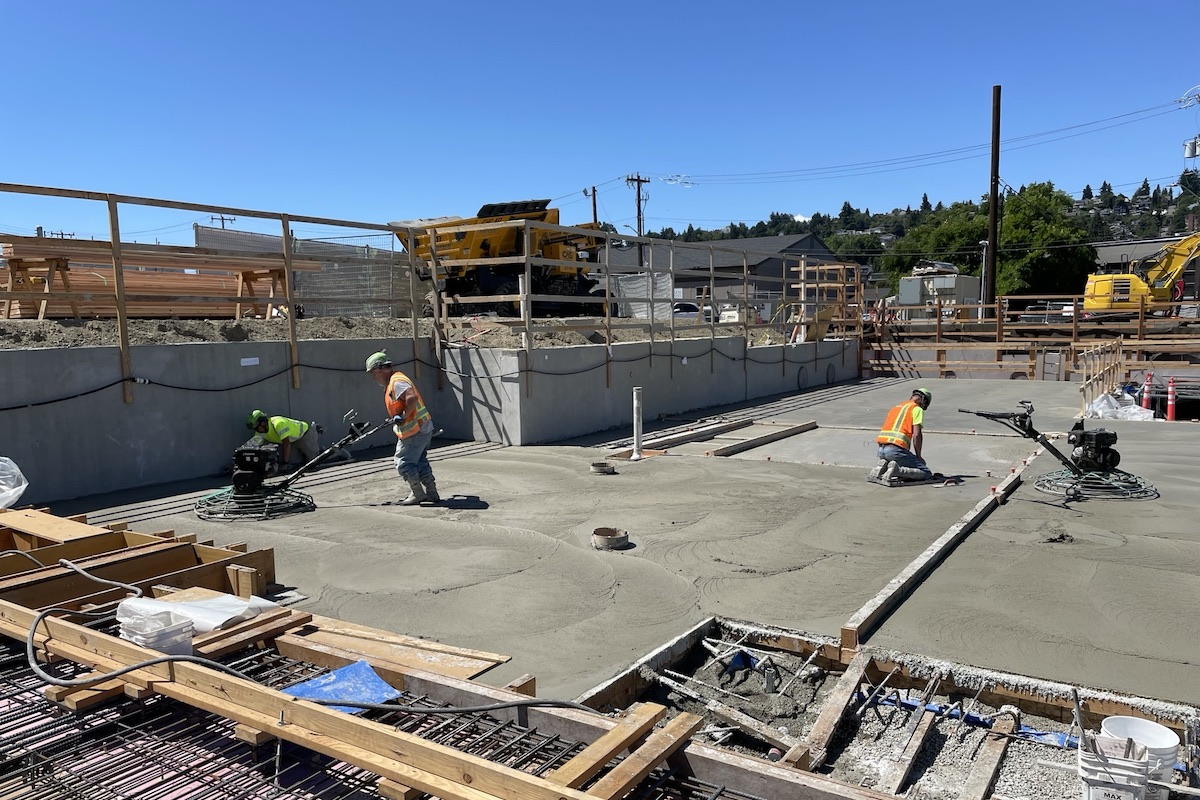“What was originally visualized as a collaborative, innovative, dynamic and student-centric learning space has fully come to life and exceeded our expectations for our middle-school students, teachers and community,” said Rob Phillips, Seattle Academy’s Head of School.
Academic spaces occupy the upper floors in the new 51,372-square-foot building, while the lower floors provide for entry, administration, general gathering, maker space and music instruction. A gymnasium and outdoor rooftop playfield provide physical activity space. Lower floors also incorporate direct connectivity to adjacent Seattle Academy buildings.
“Beyond the programmatic and site complexities, this project reaffirms the important role of schools in the urban context,” said Wendy Pautz, Design Partner. “An innovative approach to stacked program and connectivity between students, classes, grades, the broader school and the community provides an educational experience centered on team-oriented projects and problem-based learning, grounded in the larger context of its neighborhood. We hope this new project contributes to the well-being of the community, the education of its children and the social activity along the Union Street corridor.”
Each grade occupies a floor within the building, with classrooms organized around a collaborative learning space to accommodate project-based learning and cross-discipline discovery. These collaboration spaces are designed as a series of double-height, stepped interior volumes that cascade between floors. Each classroom floor features a different accent color, creating a sense of place and identity for each grade as well as a dynamic wayfinding scheme.

| Your local Volvo Construction Equipment dealer |
|---|
| PacWest Machinery |
“Classrooms have been conceptualized as independent units of learning that connect with each other, collaboration spaces, other grades and the rest of the school, providing a flexible educational experience,” said Mark Reddington, Partner-in-Charge. “Daylight, natural ventilation and operable windows allow for control of each of the spaces and promotes connection to the world outside of the building. The building’s circulation system provides an equitable experience for all students, with coordinated stair and elevator landings to ensure that students moving through the building in groups always converge at the same destination.”
An outdoor space at the entry of the school provides a gathering place for students and an urban amenity for the community. The façade is a mix of grey- and cream-colored bricks that fade vertically from dark to light. Multi-colored red sunshades provide contrast against the brick backdrop, with bold graphic elements accentuating the name of the school.
LMN Architects has designed and built projects for multiple independent schools in the Seattle area, as well as the Foster School of Business Paccar Hall and the Paul G. Allen School of Computer Science and Engineering at the University of Washington, and the Lee Center for the Arts at Seattle University.






































































